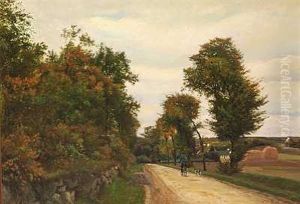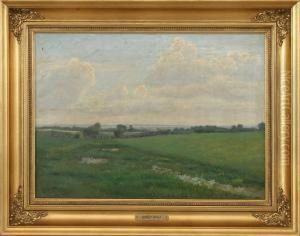Otto Petersen Balle Paintings
Otto Petersen Balle was a Danish painter known for his landscape paintings and scenes from everyday life, often reflecting the rural settings of Denmark. Born on March 13, 1865, in Copenhagen, Denmark, Balle was a part of the late 19th and early 20th-century movement in Danish art where the focus shifted towards naturalism and realism, inspired by the French Barbizon school.
Balle was educated at the Royal Danish Academy of Fine Arts where he studied under influential figures of the time such as P.S. Krøyer and Laurits Tuxen, both of whom were instrumental in the development of his artistic style. Despite the academic training, he was also greatly influenced by the plein air painting method, which encouraged working outdoors to capture the true essence of the light and atmosphere in landscapes.
His work frequently depicted the Danish countryside, coastlines, and rural communities. Balle was particularly adept at capturing the changing qualities of light and seasons, which he portrayed through a subtle palette and attentive brushwork. He was also known for his genre scenes that illustrated the simple lives of country folk, imbuing his subjects with a sense of dignity and serenity.
Throughout his career, Otto Balle exhibited his works in various venues, including the Charlottenborg Spring Exhibition in Copenhagen, a key platform for contemporary Danish artists of the time. His paintings were well-received by both critics and the public, and he enjoyed a modest success during his lifetime.
Balle's contribution to Danish art is recognized in the context of the cultural shift towards a more naturalistic depiction of the environment and society. His landscapes and genre scenes remain a valuable record of the Danish rural life in the late 19th and early 20th centuries. Otto Petersen Balle passed away at the age of 51, on January 24, 1916, in Copenhagen. Today, his works can be found in various museums and private collections, appreciated for their tranquil beauty and historical significance.
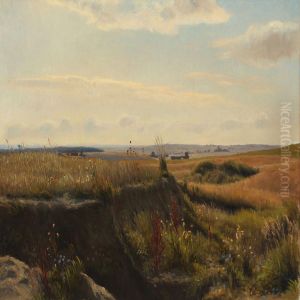
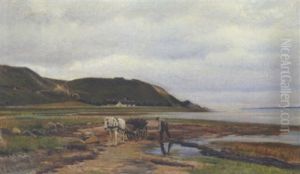
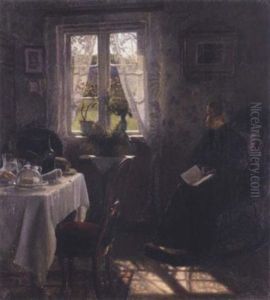
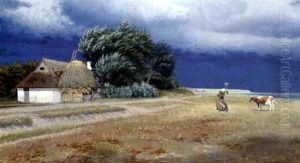
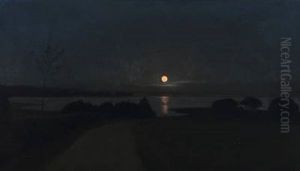
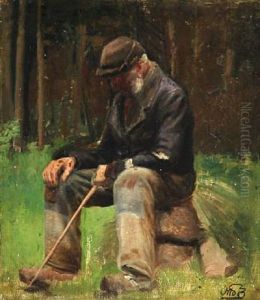
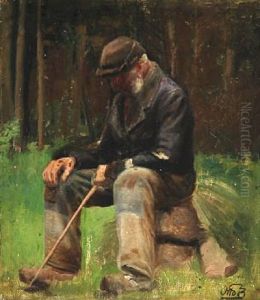
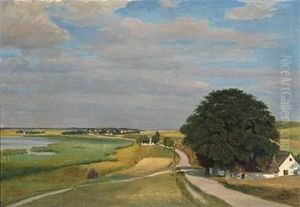
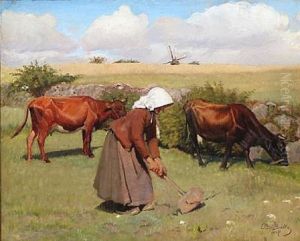
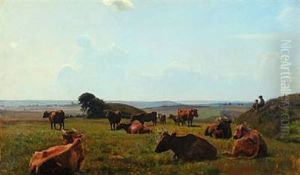
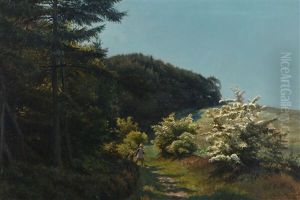
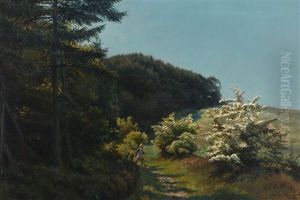
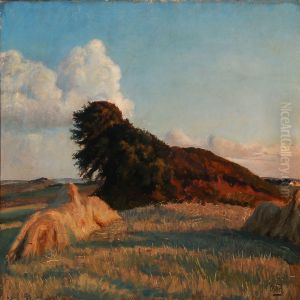
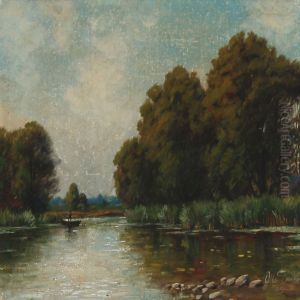
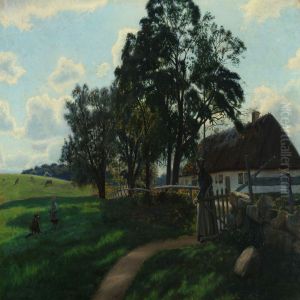
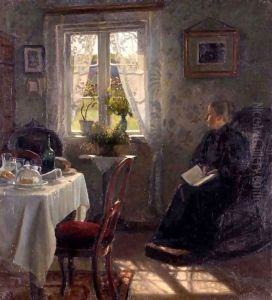
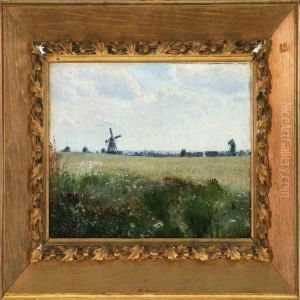
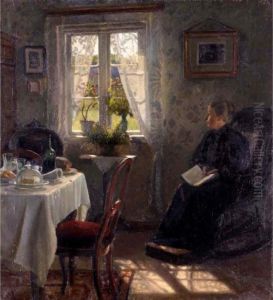
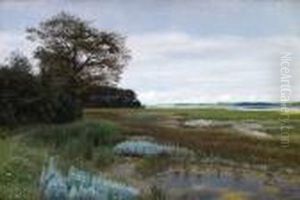
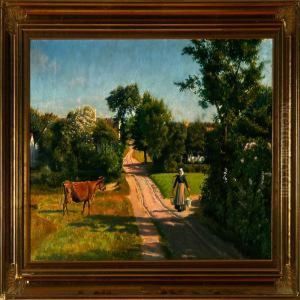
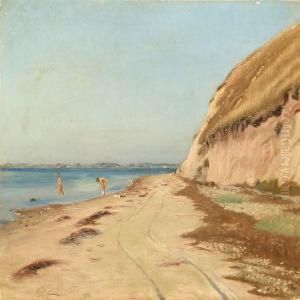
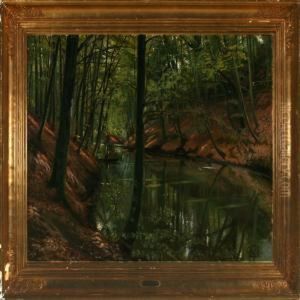
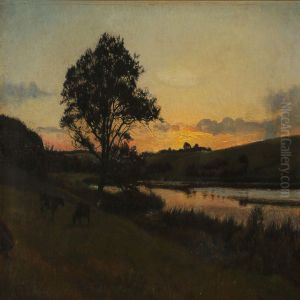
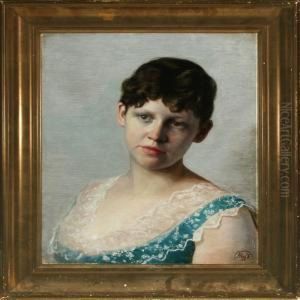
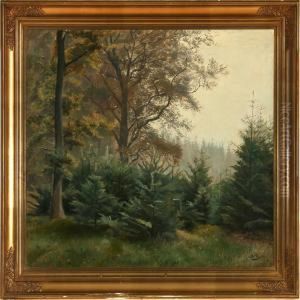
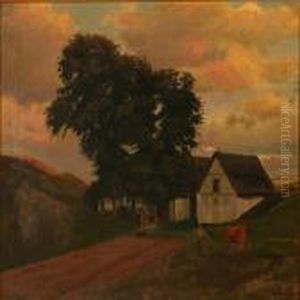
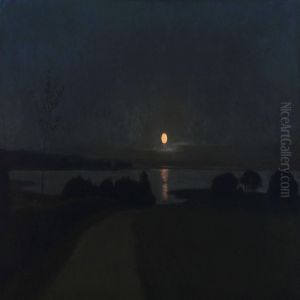
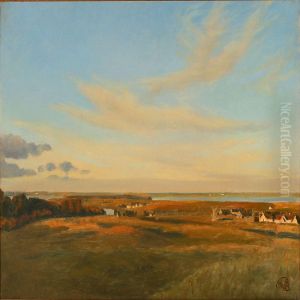
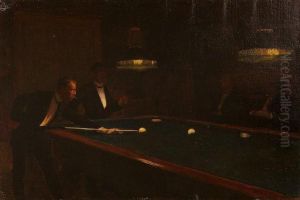
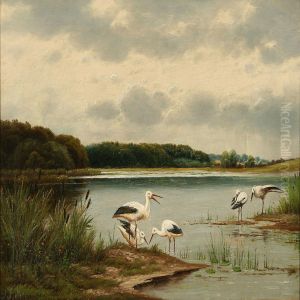
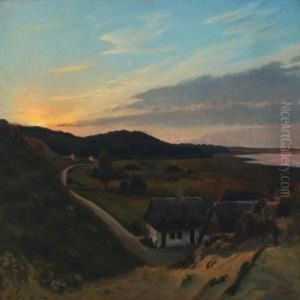
![Kuperet Marklandskab Med Gard Og [ ]ho[ ]stakke, I Baggrunden Skov](https://www.niceartgallery.com/imgs/3532013/s/otto-petersen-balle-kuperet-marklandskab-med-gard-og-ho-stakke-i-baggrunden-skov-59f84223.jpg)
